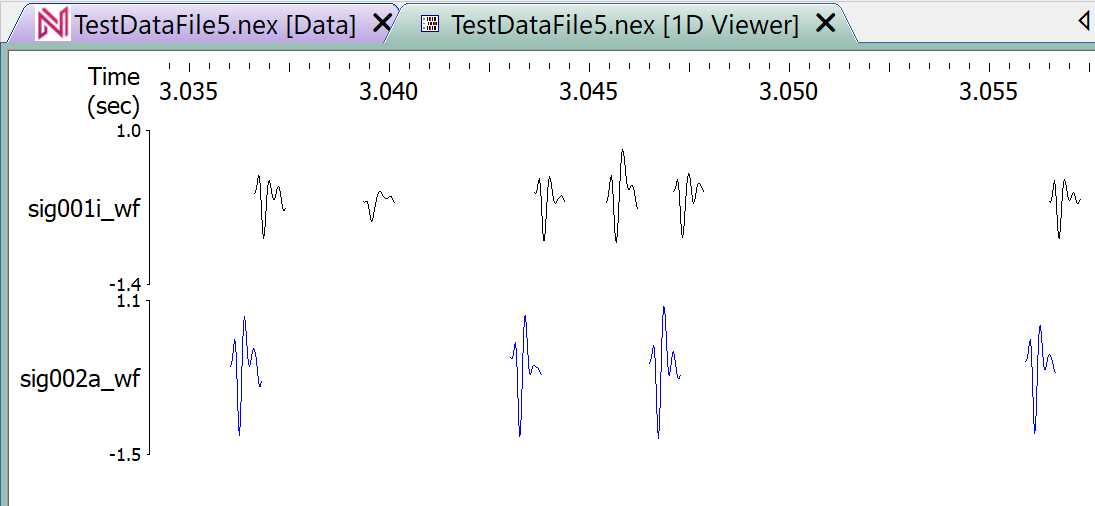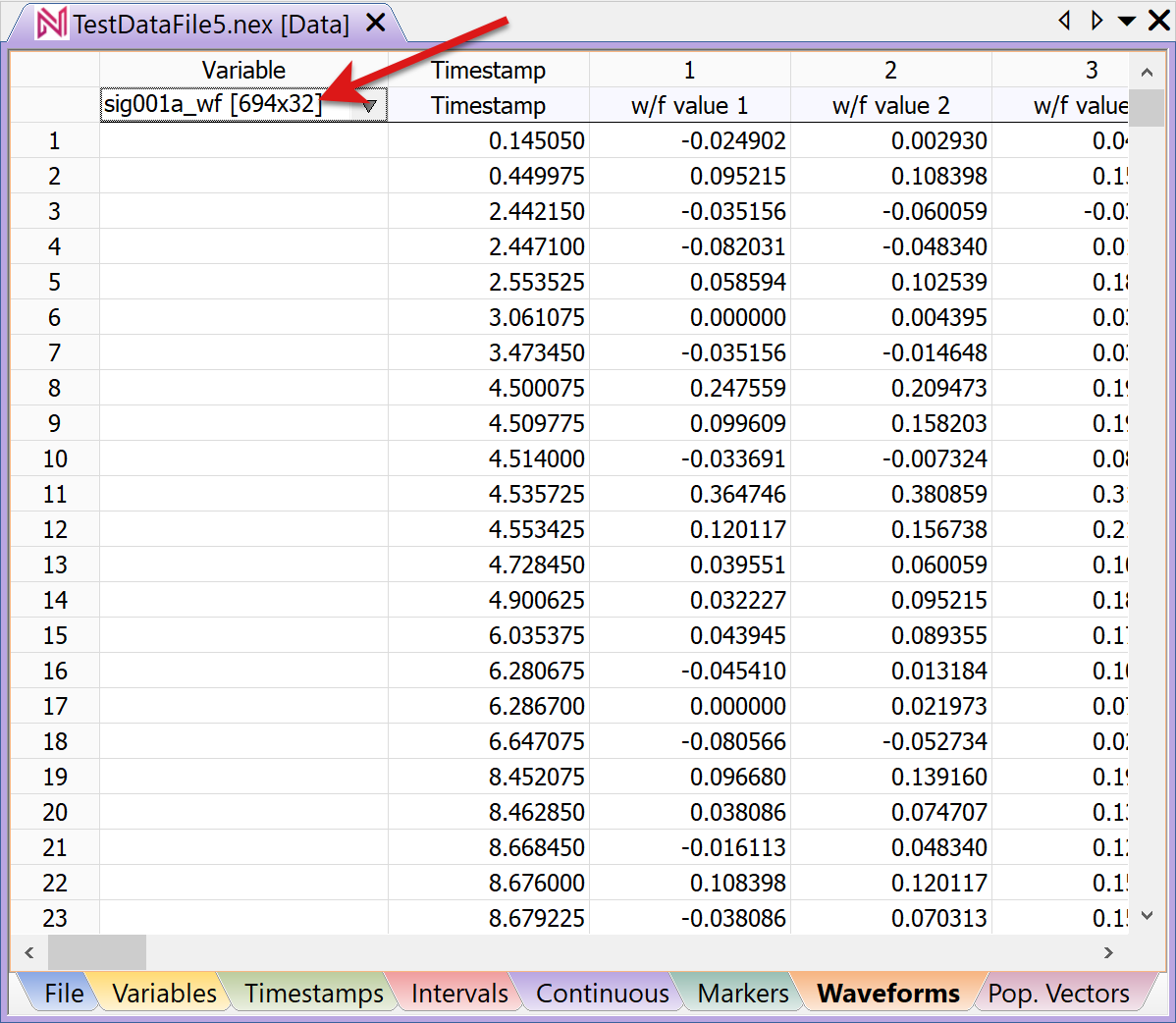Waveforms
The waveform data type is used in NeuroExplorer to store the spike waveform values together with the spike timestamps. The following figure shows two waveform variables: sig001i_wf and sig002a_wf:

For most of the timestamp analyses, only the waveform timestamps are used. In the following analyses, the waveform shapes are used:
Rate Histograms
Rasters
Perievent Histograms (instead of PST, NeuroExplorer calculates spike-triggered average for a waveform variable)
Waveform Comparison
Sort Spikes
Viewers
The Preview column of the variables panel shows the first 20 waveforms (superimposed). The Y axis of the preview column shows min and max of the first 20 waveforms.

The Metadata column shows the sampling rate, the number of data points in each waveform as well as the electrode positions, electrode numbers, cluster numbers (unit numbers), etc.
You can view the waveforms of the selected variables in the graphical display (View | 1D Data Viewer menu command, see the first figure above).
Numerical values of the waveforms and their timestamps are shown in the Waveforms sheet of the Data view.

To select a different waveform variable, click in the cell located in the row 1 of the
Variable column (the cell shows sig001a_wf in the figure above).
Waveform values (in milliVolts) are shown in columns labeled 1, 2, etc.
Waveform Variables in Python
Use the WaveformValues() method to get the waveform values of a waveform variable:
import nex
doc = nex.GetActiveDocument()
waveforms = doc['sig001a_wf'].WaveformValues()
# print the values of the first waveform
print(waveforms[0])